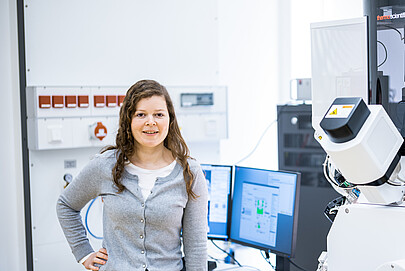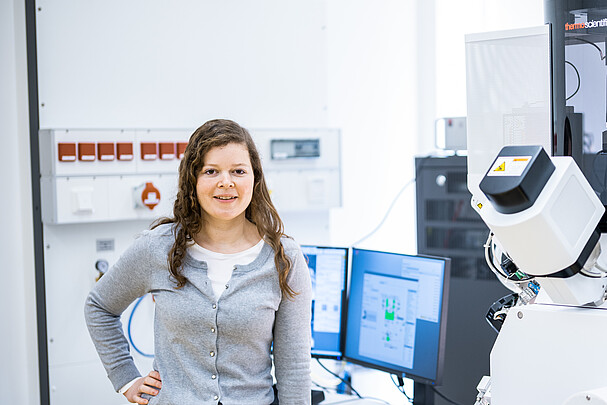
 ©
Jan Hosan/TU Braunschweig
©
Jan Hosan/TU Braunschweig
38106 Braunschweig

 ©
Jan Hosan/TU Braunschweig
©
Jan Hosan/TU Braunschweig
38106 Braunschweig
Who are you and what is the topic of your research group?
My name is Jana Hartmann and we work with light-emitting components made of gallium nitride, such as LEDs or laser diodes. We are miniaturising these more and more to generate new functionalities (for example, micro-LED arrays for metrological applications, combinations of micro-LED and photodetectors for gas sensors or laser diodes for quantum computers). My research group focuses on the epitaxy of nitride layers, their characterisation and the analysis of optoelectronic components, which are sometimes only a few micrometres in size.
Which research question are you working on?
How can we produce LEDs, laser diodes or other optical components that are so small and yet efficient? This is where lithography reaches its limits, the edge effects come into play more and more and the material has to be even more defect-free. Because even the smallest defect in the material or during processing can damage these small components so much that they cannot emit light any more.
What makes this topic special/exciting for you?
Personally, I find it very exciting that we can actually and quite directly see in the microscope what we have produced in the clean room. For example: We can grow a layer sequence for an LED in the morning with epitaxy. In the afternoon, we can use the scanning electron microscope and cathodoluminescence to see whether the layers are of high quality and whether they emit at the desired wavelength. The next day we can process the layer sequence in our clean rooms, which means structuring by means of lithography, deep etching, and applying contacts. In the afternoon we then measure, for example at the tip measuring station, whether the processing into a micro-LED was successful.
It is just a great feeling to have everything in your own hands during production and analysis. And thanks to our excellent characterisation capabilities, we can look at and evaluate even the smallest components directly or at least indirectly.
How does your topic help to push the boundaries of what can be measured?
Micro LED arrays with very small pixels can be used for super-resolution microscopy, for example. This could make ultra-high-resolution microscopy much easier and cheaper, and it could be used much more often. With our research, we are therefore contributing to the topic of "ubiquitous sensing".
What is special about participating in the QuantumFrontiers cluster of excellence?
In QuantumForntiers, so many working groups with so much know-how are networked that you can find a contact person for (almost) every problem. If, for example, a technology fails at short notice in Braunschweig, we can count on our partners within the cluster. In one specific case, for example, without the help from Hanover, our samples would have had to wait several weeks for the next process step and our research would have been massively delayed. We really appreciate this cooperation and support within QuantumFrontiers!






